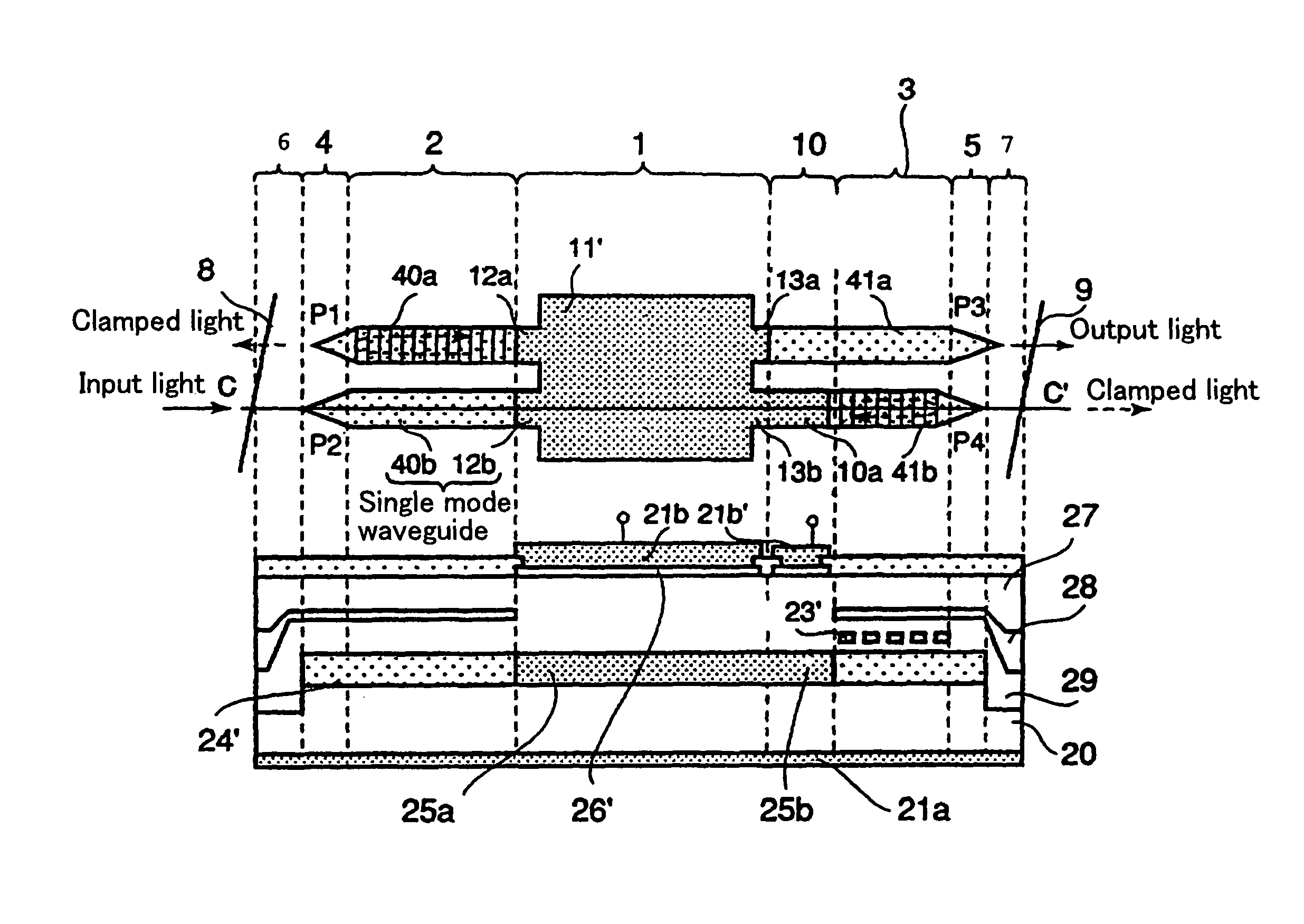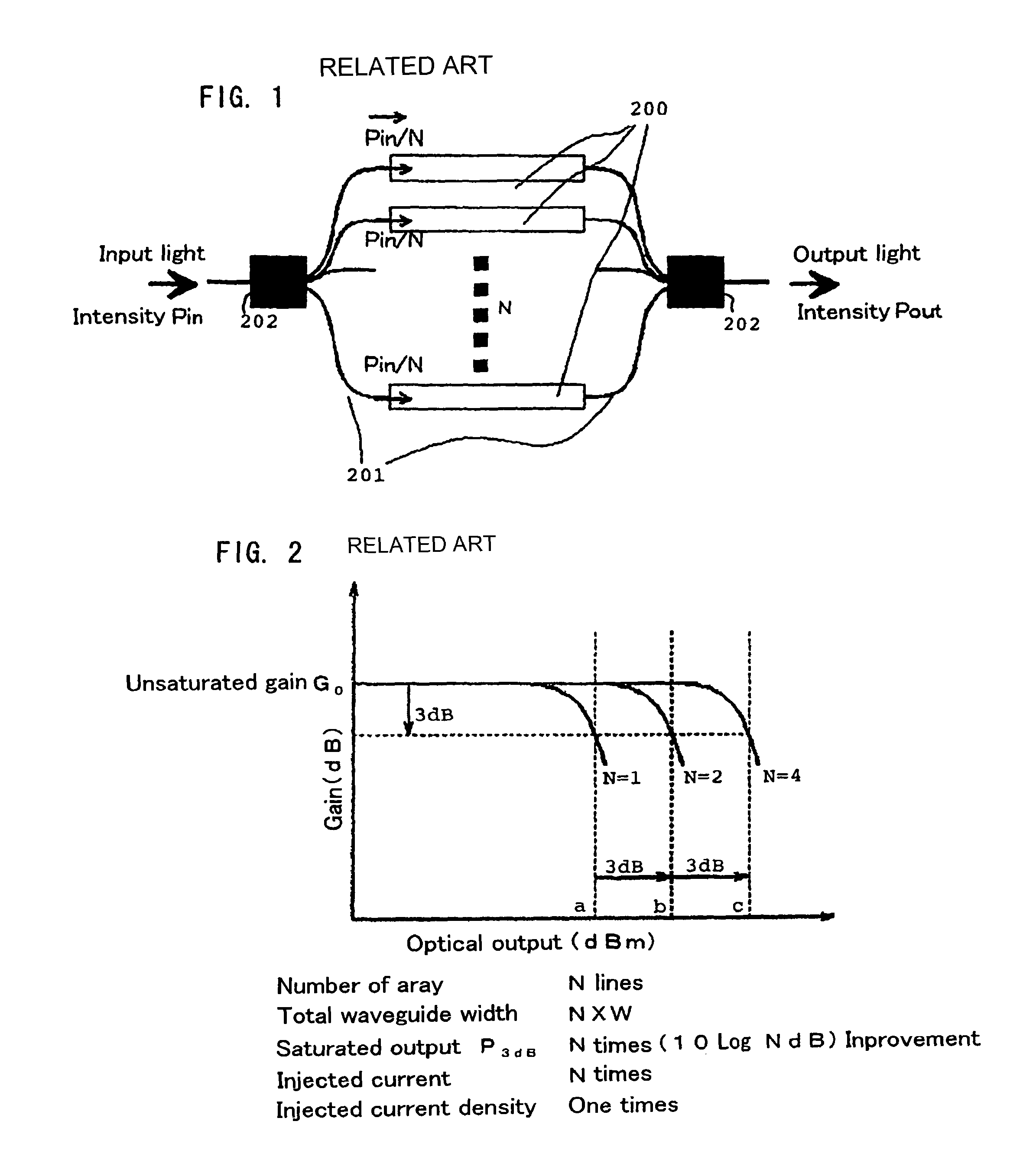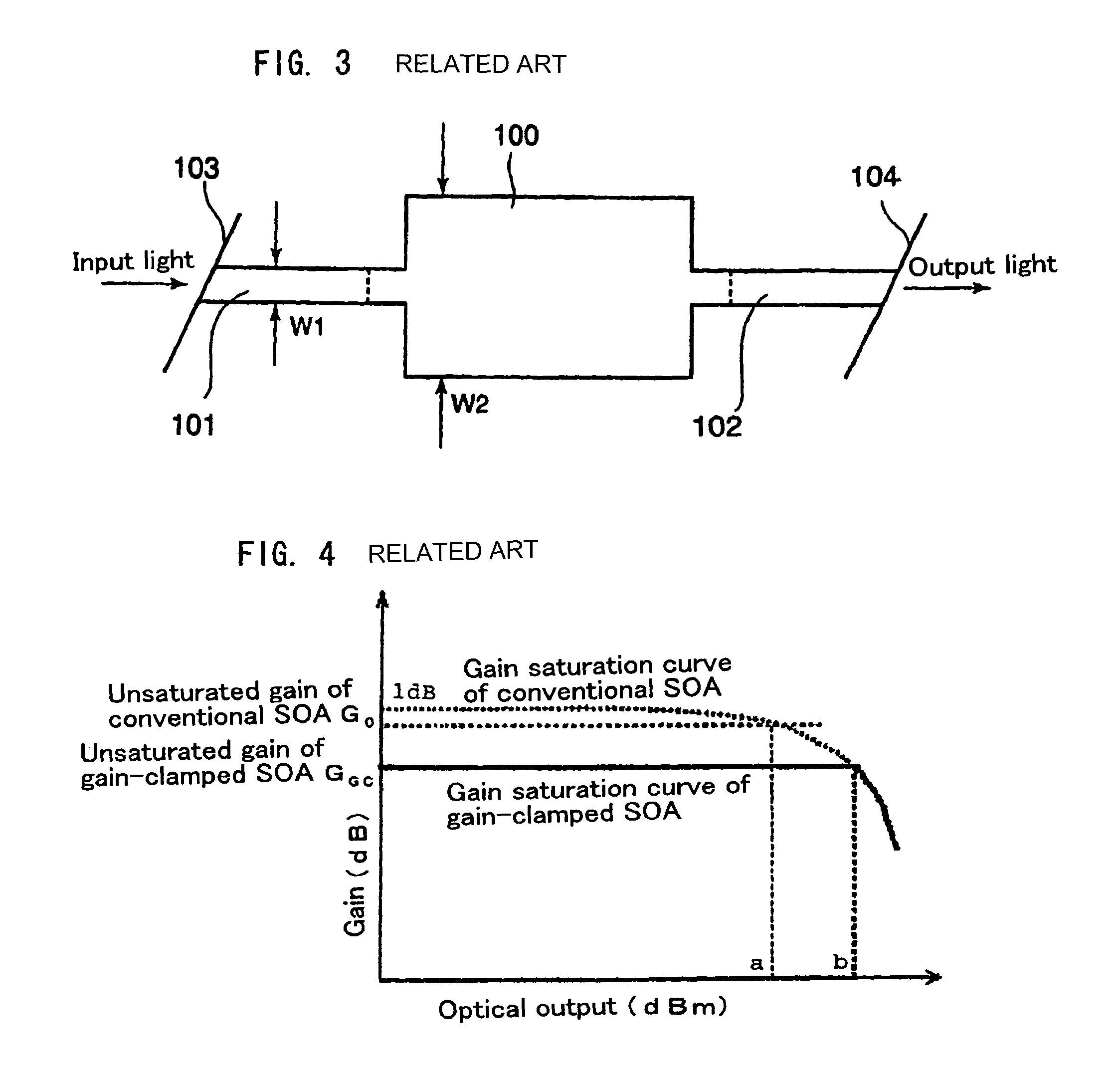Gain-clamped semiconductor optical amplifier
a semiconductor optical amplifier and gain-clamped technology, applied in the structure of semiconductor amplifiers, semiconductor lasers, electromagnetic transmission, etc., can solve the problems of deteriorating gain saturation characteristics with respect to signal light, increased current density, and difficulty in achieving high saturated output and polarization independence, so as to reduce the error rate of signal conversion.
- Summary
- Abstract
- Description
- Claims
- Application Information
AI Technical Summary
Benefits of technology
Problems solved by technology
Method used
Image
Examples
1st embodiment
[0093]FIG. 8a is a plan view of a structure of a gain-clamped SOA according to a first embodiment of the present invention, FIG. 8b is a cross-sectional view taken along line C-C′ of the structure shown in FIG. 8a, FIG. 8c is a cross-sectional view taken along line A-A′ of the structure shown in FIG. 8a, and FIG. 8d is a cross-sectional view taken along line B-B′ of the structure shown in FIG. 8a;
[0094]The structure of a waveguide of the gain-clamped SOA according to the present embodiment will be described below with reference to FIG. 8a. As shown in FIG. 8a, the gain-clamped SOA according to the present embodiment has waveguides extending from device end face 8 to which input light is applied to a device end face 9 from which output light is emitted. The waveguides are of a structure having window area 6, SSC (spot size converter) area 4, DBR area 2, gain area 1, DBR area 3, SSC area 5, and window area 7 which are successively arranged from device end face 8. The waveguides close...
experimental example
[0123]The gain saturation performance of the gain-clamped SOA shown in FIGS. 8a through 8d was confirmed by experimentation. First, optical fibers were coupled to device end faces 8, 9 of the gain-clamped SOA, and light having a wavelength of 1.55 μm with a superimposed NRZ modulated signal having a bit rate of 10 Gb / s was applied. When the light intensity of the input signal light was varied at a constant injected current of 700 mA, a constant fiber-to-fiber gain of 20 dB was achieved when the input light intensity was 2 dBm or less. At the same time, it was confirmed that clamped light was being oscillated at a wavelength of 1.51 μm. When a signal error rate of the output signal waveform was measured, no significant increase in the signal error rate as compared with the signal error rate of a signal not passing through the SOA was observed. When the input light intensity was 2 dBm or greater, clamped light stops oscillating, and a reduction in the fiber-to-fiber gain was confirmed...
2nd embodiment
[0126]FIG. 10a is a plan view of a structure of a gain-clamped SOA according to a second embodiment of the present invention, and FIG. 10b is a cross-sectional view taken along line C-C′ of the structure shown in FIG. 10a.
[0127]First, a structure of waveguides of the gain-clamped SOA according to the present embodiment will be described below with reference to FIG. 10a. The gain-clamped SOA according to the present embodiment is basically structurally similar to the gain-clamped SOA shown in FIG. 8a except that a first path through which input light is propagated (a path interconnecting port P2 near device end face 8 and port 3 near device end face 9) and a second path through which clamped light is propagated (a path interconnecting port P1 near device end face 8 and port 4 near device end face 9) are spatially separate from each other. Those structural parts shown in FIG. 10a which are identical to those shown in FIG. 8a are denoted by identical reference characters.
[0128]On the ...
PUM
 Login to View More
Login to View More Abstract
Description
Claims
Application Information
 Login to View More
Login to View More - R&D
- Intellectual Property
- Life Sciences
- Materials
- Tech Scout
- Unparalleled Data Quality
- Higher Quality Content
- 60% Fewer Hallucinations
Browse by: Latest US Patents, China's latest patents, Technical Efficacy Thesaurus, Application Domain, Technology Topic, Popular Technical Reports.
© 2025 PatSnap. All rights reserved.Legal|Privacy policy|Modern Slavery Act Transparency Statement|Sitemap|About US| Contact US: help@patsnap.com



